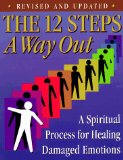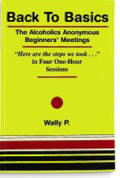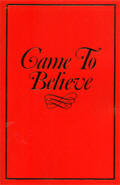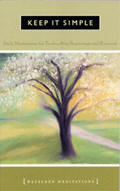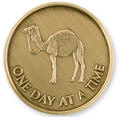

MRP Site Navigation
MRP Home Page
MN 12 Step Groups
MN Treatment Centers
National AA Intergroups
National NA Intergroups
National Al-Anon Intergroups
Other Recovery Groups
Online Meetings
AA History
Recovery Events
Links
Alcoholism
Links
Codependency Links
Commercial
Sites
Drug
Addiction Links
Eating Disorder Links
Gambling
Addiction Links
Gay
& Lesbian Links
Mental & Emotional Health
Religion
& Spiritual Links
Sexual Addiction Links
Women's Issues
Bookstore
Reading
Room
AA Literature
Recovery Articles
Personal
Stories
People In Recovery
Graphics
Supporting the Minnesota Recovery Page
Contact Us

The Oxford Group & Alcoholics Anonymous: A Design for Living that Works

The Roots of
Alcoholics Anonymous

The Good Book and the Big Book: A.A's Roots in the Bible

By the Power of God : A Guide To Early A.A.
Groups and Forming Similar Groups Today

First-Year Sobriety: When All That Changes
Is Everything
The 12 Steps:
A Way Out:
A Spiritual Process for Healing
The Pursuit of Sobriety
|
We recover by the Steps we take, not the meetings we make! Alcoholics Anonymous is for alcoholics who want to stop drinking, start living and enjoy being alive. But, AA has two elements; (1) the Fellowship and (2) the Program. The Fellowship of AA is comprised of the individuals who make up the groups. Some have recovered from alcoholism and some have not. Recovery occurs as the result of following a precise Program of action. This Program of Alcoholics Anonymous is stated in the book “Alcoholics Anonymous”. Page 17 of this book , the “basic text” for members of Alcoholics Anonymous and lovingly called the “Big Book”, states that almost all who have followed the Program have recovered. It further states that the Fellowship (making meetings and hanging out in AA) is good and important, but that will not produce recovery. Recovery is the product of taking the “Program of Action” or the Steps as they are outlined in the “Big Book” and is absolutely necessary if you are to survive alcoholism. Today, a person with a drinking problem will have little trouble finding the Fellowship of Alcoholics Anonymous wherever they may be in this world of ours. Unfortunately though, they will probably have a difficult time finding the Program, and therefore will have little chance of finding lasting sobriety. The reason is quite simple; many AA groups today are made up of folks who are confused as to why the group exists and have little if any knowledge of the Program, i.e. the problem (alcoholism), the Solution (God as we understand Him) nor the practical Program of action (the 12 Steps) which assures recovery. Search for a group that is focused on the Solution. They will have “Big Book Study Meetings”, “Speaker Meetings” and “Tradition Study Meetings”. The members of such a group will be alcoholics who are “recovering” (taking the Steps) or have “recovered” (have taken and continue to live by our Steps). For the person who is sincere in their desire to stop drinking for good and all, there are three things which are absolutely essential:
First, let’s make certain that we understand the requirement for membership in Alcoholics Anonymous. Very simply it is a desire, yearning, longing to quit drinking for good and for all. It is neither “and” anything nor “or” anything; just an honest desire to never take another drink. That is stated on page xiv of the “Big Book” and by our Third Tradition (The only requirement for membership is a desire to stop drinking). All of us have problems other than drinking, but drinking is our only common problem. Second, let’s make certain that we understand the purpose of the Basic Text (pg. xi), “Alcoholics Anonymous”. “To show other alcoholics precisely how we have recovered is the main purpose of this book (page xiii)”. This Book contains all the experience and knowledge an alcoholic will ever require to recover from alcoholism. Third, let’s make certain that we understand that we are talking about “complete willingness” (page 12) “to go to any length” for emotional sobriety--by taking and living by the Steps. Learning to live by our Steps is not optional, it is mandatory for permanent sobriety. Fourth, you will normally find a sponsor in the AA group you decide to call your “home group”. So, let’s make certain that you understand the responsibility of a sponsor. A sponsor’s job is simply to help you take the Steps according to the clear-cut directions that came with the Steps so you can experience the happiness and peace of mind that comes with recovery. If your sponsor does not start you in the “Big Book”, you have made a bad choice in who you are betting your life on. Since your life depends on what you do, don’t be bashful about finding someone who will help you experience what our founders experienced. To get what they got, we must do what they did. They wrote the book “Alcoholics Anonymous” to assure that we would have the opportunity to experience the “promises” of our Program. We all paid a hell of a price to get here, let’s be willing to pay a less demanding price to stay here; by following the directions in the “Big Book”!!! And finally, let’s make certain that we understand the purpose of an AA group. The Primary Purpose of an AA group is to help the suffering alcoholic understand what alcoholism is, what the Solution to alcoholism is and what the practical Program of action is that promises recovery from alcoholism. On page 58 of the “Big Book”, the first one-hundred tell us how the Steps work when they write, “Rarely have we seen a person fail (to find both physical and emotional sobriety) who has thoroughly followed our path (the clear-cut directions in the Big Book)”. Our primary purpose is also stated on pg.. xiii, 17, 20, 29, 45, 84, 85, 89 and elsewhere in the “Big Book”. Our Fifth Traditions states, “Each group has but one primary purpose--to carry its message to the alcoholic who still suffers”. A healthy group is one where its members honor our Twelve Traditions and live by our Twelve Steps. Unfortunately, the members of many groups today ignore both the Steps and Traditions, and as a result, they are more concerned with generating enough income to pay the rent than they are with trying to help the newcomer. Groups that ignore the Twelve Traditions ultimately find themselves in trouble and will fail. One of the misleading thoughts a newcomer might develop is the idea that if s/he is not drinking, they have recovered. Not so!!! There are 2 types of sobriety:
There is a great deal of ignorance and misunderstanding within the Fellowship of AA today as to what is “Program” and what is not “Program”. On page 59 of the “Big Book”, you will find the following: “Here are the Steps we took, which are suggested as a Program of recovery”. It does not say: “Here are the meetings we went to”, nor does it say: “Here are The Steps we talked about and discussed”. We recover by the Steps we take, not the meetings we make! It says: “took” which implies action (page 63). The clear-cut directions for taking the Steps can be found only in our basic textbook. That is exactly why the founders of our Program went to the trouble of writing and printing the “Big Book”. To keep their message from being garbled. More often than not, the newcomer is told: “don’t drink and go to meetings” or worse yet “Go to ninety meetings in ninety days”. You will not find either of these suggestions in the “Big Book” nor in the “Twelve Steps and Twelve Traditions” (the 12 & 12). If you rely on meetings for your “recovery”, you will very likely find only a short term of physical sobriety and because you continue to have a case of untreated alcoholism, will return to drinking. Recovery happens only as the result of taking and living by our Steps. Often the newcomer is told to get a copy of the “12 & 12” as a beginning text. This is bad advice. Your study of the “12 & 12” should come only after you have experienced the Steps as the result of following the directions in the “Big Book”. The “12 & 12” is a great book. When you begin your study of this book, be sure to carefully read the “Forward”. Bill W. (author of both the “Big Book’ and the “12 & 12”) states that the “12 & 12” is a series of essays, not clear-cut directions, on our Steps and Traditions (pg. 15). On pg. 17, Bill states that the “Big Book” was and still is the “Basic Text” for Alcoholics Anonymous. Anyone who can read and understand the English language must know that “Basic Text” is the first book to study and from which we gain knowledge. The “Big Book” is the combined experience and knowledge of more than 100 men and women that has survived the test of time since 1939. Once we have experienced the results of the Steps, as they were given us by the first 100, we can and should go to other books to learn how to further develop our spiritual being (page 87). The “12 & 12” is a great “second” book but it certainly is not the “first” and Bill W. said so. While the history and roots of Alcoholics Anonymous lie in many sources, the culmination came to be on May 12, 1935 in Akron, Ohio when Bill W., a stockbroker, sober 6 months, made a call on Dr. Bob, a surgeon, who was the hopeless victim of alcoholism. Bill was successful in helping this doctor understand the exact nature of the disease and thereby begin the road of recovery. They immediately started looking for alcoholics who might want to stay sober. Over the next four years, with the combined experience and knowledge of approximately 100 sober alcoholics, they perfected a Program that will not only help us learn how to stop drinking for good and all, but promises a successful life that has purpose, direction and peace of mind. That Program was published in April, 1939 in a book titled “Alcoholics Anonymous”. This book continues be the only reliable source on how to recover from alcoholism known to mankind. It is the one thing we can bet our lives on and know that it will not fail us IF WE LIVE BY IT. The Program contained in the “Big Book” has proved so successful with hopeless alcoholics that people with other types of problems have experimented with our Program of recovery. Their success has been so great that there are now somewhere around 200 anonymous 12 Step fellowships providing recovery for problems that have nothing to do with drinking. Therefore we are most helpful to nonalcoholics seeking a solution to their particular problem by trying to help them find the fellowship that understands their problem. As long as we confine our activities to trying to help alcoholics only, we are supremely successful. Now some very real facts that the newcomer should be aware of. When the only thing we had as a source of recovery was the “Big Book”, in excess of 75% of those seeking help for their alcoholism got sober and stayed sober (pg. xx). We are not doing so well today. In fact, less than 5% of those seeking help today will find as much as 5 years of sobriety. A long time member of the General Service Office of AA in New York recently stated that between 1/2 & 2/3 of all newcomers will be gone from our Fellowship within 90 days. They were told to “go to meetings and don’t drink” rather than begin recovery by following the path the first 100 laid down for us in the “Big Book”. As the result, the vast majority of newcomers will not adopt the Program of AA as a way of life. They will return to drinking and die or go permanently insane. The Program of AA is just as effective today as it was when first offered to us in 1939. The attitude of many in our Fellowship of AA today is that we have learned a great deal since the publication of the “Big Book” and that is true. We do know a great deal more about many things but unfortunately we know only a little more about the problem (alcoholism) and nothing more about the Solution (God as we understand Him) and nobody has demonstrated a more successful Program of action that assures we will find the Power necessary to survive a killer case of alcoholism. That is precisely what the Program of Alcoholics Anonymous is about. The “Big Book” tells us precisely (pg. xiii), specifically (pg. 20) and exactly (pg. 45) what we must do to recover and it gives us clear-cut directions on how to do it. There is no other source for this information. Only the book “Alcoholics Anonymous” is the authority. Contrary to the opinion of many in the Fellowship, the fact that we are not drinking does not imply recovery. Recovery from alcoholism takes place only after you have met a few simple requirements which will produce an entire psychic change or spiritual experience/awakening. We do not become parents by going to PTA meetings. We do not become recovered alcoholics by going to AA meetings. Our God given sex instinct will give us a clue as to what we must do to become a parent. The “Big Book” will give us clear-cut directions on what we must do to become a recovered alcoholic. If we keep on doing what we did, we keep on getting what we got, only more and worse. If we change what we are doing by following the directions in the “Big Book”, we will start getting what we get, only more and better. If a person doesn’t like what they get, we will let them keep what they got. Here is the process of recovery:
Some folks in AA will try to discourage you from taking the Steps quickly. If you will carefully study the “Big Book” and some of the historical material that is readily available to you, you will learn that the folks who wrote the “Big Book” and gave us this Program, i.e. Bill W., Dr. Bob and most of the first 100 took the Steps in their first few days following their last drink. They recognized the importance of getting the Program instilled in the newcomer very early. Page 24 tells us why. After a few days, we can no longer remember the misery that comes with our drinking. When the misery is forgotten, there will be little reason to take the Steps. When they wrote the “Big Book”, the emphasis was on recovery, taking the Steps, not going to meetings. There was only one meeting each week and that was for newcomers so that they might hear and see recovered alcoholics tell what they were like, what happened and what they are like now. From these meetings, they were given hope (Step Two), they came to believe that maybe they too could tap into this wonderful Power. Dr. Bob’s Group in Akron, the King’s Group, still has only one meeting a week. Members of this Group participate in meetings of other groups and are busy working with newcomers. They are truly members of Alcoholics Anonymous. To get a clear picture of the Program of Alcoholics Anonymous, let’s examine Chapter One, “Bill’s Story”. Bill tells us what he was like in the first part of his story. He then tells us about how his drinking became a problem and some of the consequences. As we read “Bill’s Story”, we look for his experiences that we can say, “that happened to me too like being jittery in the morning, having to have a drink to get out of bed, promising we would never drink again and then drunk again”. He tells us how his alcoholism progressed and how he finally learned that in less than a year he would either die or go permanently insane. On page 8, he tells of his surrender - Step One. He tells how his drinking buddy, Ebby, only two months sober, called on him and told him about the practical Program of action he had found through the Oxford Group that made it possible for him (Ebby) to stay sober. From this Bill found some hope and finally even the belief that if he did what Ebby was doing, he too could learn to live sober - on page 12, Bill takes Step Two. On page 13, Bill tells us that he wound up at Townes Hospital because he was going into DT’s. This was December 11, 1934. Three days later, while Ebby was visiting Bill at the hospital, Bill asked him to again explain what he had done that helped him stay sober. Ebby went over it one more time. That day, December 14, 1934, Bill humbly offered himself to God as he understood Him - Step Three. While at the hospital, Ebby visited Bill again and helped Bill to take Steps Four, Five, Six, Seven, Eight, Nine, Ten & Eleven (as we understand our Program today). On page 14, Bill describes his Spiritual Experience; the Promise of taking the first Eleven Steps. Bill was discharged from Townes Hospital on December 18, 1934. Bill and at least thirty (30) more of the first 100 recovered in Townes Hospital during the first few days after their last drink. From the experience and knowledge of the first 100 came the Program of Alcoholics Anonymous which they published in the book “Alcoholics Anonymous” so that the precious knowledge they had acquired would not be garbled. They did not say “These are the meetings we went to”. They did not say, “these are the Steps we discussed and talked about”. They said “These are the Steps we took”. They tell us precisely what action they took to recover from alcoholism and what they did to stay recovered - one day at a time. With most of the first 100 recovering in the first few days after their last drink, you have to wonder where the idea of 90 meetings in 90 days came from. It sure did not come from Alcoholics Anonymous. Simple but not easy, a price must be paid. However, we do have a way out on which we can absolutely agree and on which we can join in brotherly and harmonious action. That is the great news the book “Alcoholics Anonymous’ carries to those of us who suffer from alcoholism. It is the time-tested, experience-proven Program of Alcoholics Anonymous; the Twelve Steps as they were given us by the first 100 sober members of Alcoholics Anonymous. These precious Twelve Steps are protected by the Twelve Traditions. Rarely have we seen a person fail who has thoroughly followed our path. Those who do not recover are people who cannot or will not completely give themselves to this simple Program (page 58). “Precisely”, (page xiii), “specifically” (page 20), “exactly” (page 45), “thoroughly and completely” (page 58); doesn’t leave much room for doing this anyway we want to when we want to. It is not an “individual Program”. Since 1939, this Program has not failed those of us who have followed it. Dr. Bob, one of our co-founders
said, “If you think you are an atheist, an agnostic, a
skeptic, or have any other form of spiritual pride which
keeps you from accepting what is in this book, I feel sorry
for you. If you still think you are strong enough to beat
the game alone, that is your affair. But if you really and
truly want to quit drinking for good and all, and sincerely
feel that you must have some help, we know that we have an
answer for you. It never fails, What are you going to do?
|
The Minnesota Recovery Page is a directory of resources for recovery from chemical addiction in Minnesota. The Minnesota Recovery Page is NOT an organization, nor is the Minnesota Recovery Page endorsed by or affiliated with Alcoholics Anonymous, Al-Anon, or any other group. In an effort to be self-supporting, the Minnesota Recovery Page includes a limited amount of advertising. The MRP makes a small amount of money when you click on the links below and purchase an item.
© 1996-2009 Minnesota Recovery Page - All Rights Reserved
A word about the advertising:
In an effort to be self-supporting, the Minnesota Recovery Page includes a limited amount of advertising. The MRP makes a small amount of money when you click on the links below and purchase an item.

Program Necklace
Gold plated 24"
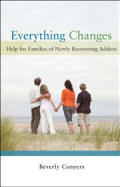
Everything Changes
Help for Families of Newly Recovering Addicts
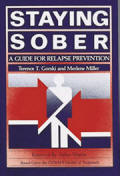
Staying Sober
A Guide for Relapse Prevention
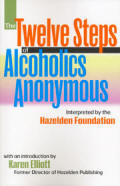
The Twelve Steps Of Alcoholics Anonymous
Interpreted
By The Hazelden Foundation
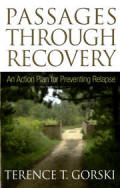
Passages Through Recovery
An Action Plan for
Preventing Relapse
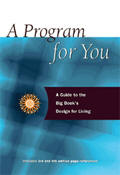
A Program For You - A Guide To the Big Book's
Design for Living
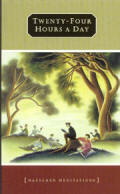
Twenty Four Hours A Day Softcover
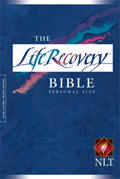
Life Recovery Bible Personal Size 2nd Edition

Large Amethyst Recovery Necklace Pendant
(Sterling Silver)
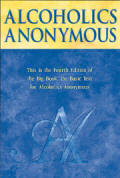
Alcoholics Anonymous Big Book 4th Edition Hardcover

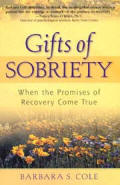
Gifts of Sobriety
When the Promises of
Recovery Come True
Click to see many
more medallions
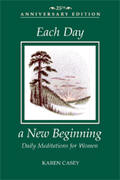
Each Day a New Beginning 25th Anniversary
Edition
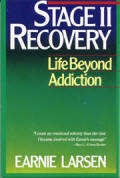
Stage II Recovery
Life Beyond Addiction
© 1996-2009 Minnesota
Recovery Page


